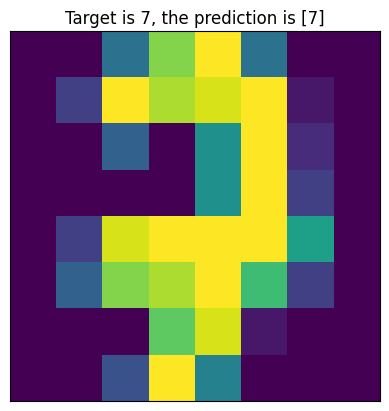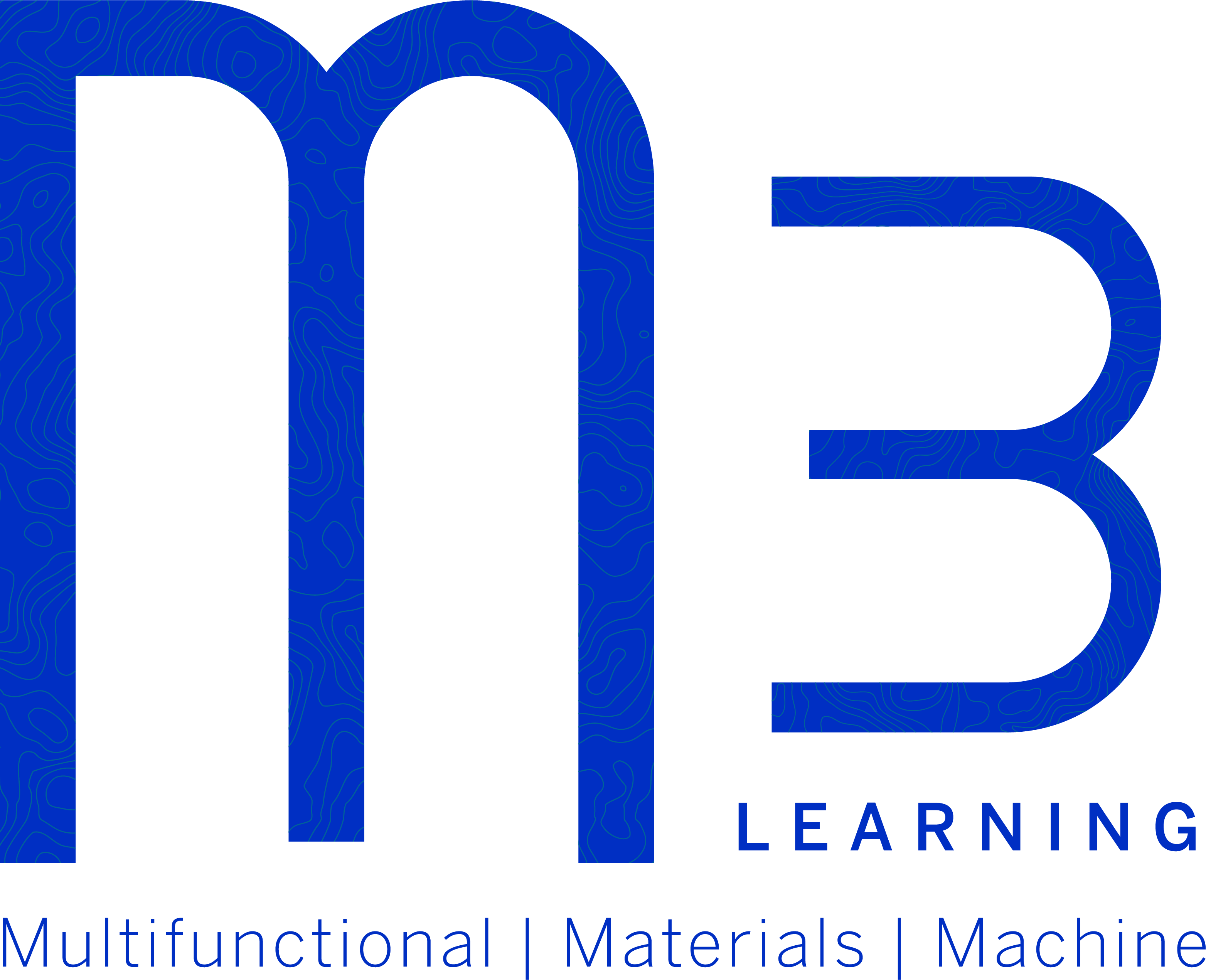Introduction to Linear Machine Learning
Contents
from IPython.display import IFrame
import numpy as np
import matplotlib.pyplot as plt
import pickle
from sklearn import datasets, svm
from sklearn.preprocessing import PolynomialFeatures
from sklearn.model_selection import cross_val_score
from sklearn.pipeline import Pipeline
from sklearn.linear_model import LinearRegression
Introduction to Linear Machine Learning#

What is Machine Learning?#
Everyone write down their definition
“Machine Learning at its most basic is the practice of using algorithms to parse data, learn from it, and then make a determination or prediction about something in the world.” – Nvidia
“Machine learning is based on algorithms that can learn from data without relying on rules-based programming.”- McKinsey & Co.
“The field of Machine Learning seeks to answer the question “How can we build computer systems that automatically improve with experience, and what are the fundamental laws that govern all learning processes?” – Carnegie Mellon University
Machine learning research is part of research on artificial intelligence, seeking to provide knowledge to computers through data, observations and interactions with the world. That acquired knowledge allows computers to correctly generalize to new settings.
“Machine Learning is the science of getting computers to learn and act like humans do, and improve their learning over time in autonomous fashion, by feeding them data and information in the form of observations and real-world interactions.”
Mathematical Definition#
The problem is to take n-samples of data with m-features and try to predict a property of unknown data
Generally, each sample has multiple attributes commonly called features
When using linear machine learning models choice of features is essential
Machine Learning Basic Concepts#
Representations#
A set of classifiers or the language that a computer understands
How the model connects data to the objective
The way humans make inferences from data is different than of machines
Examples:
K-nearest neighbors
support vector machines
decision trees
neural networks
…
Evaluation#
how the model determines its success at completing an objective
**The ways humans and computers quantify success at **an objective are very different****
Examples:
accuracy/error rate
squared error
likelihood
KL divergence (entropy between two distributions)
…
Note for Engineers - The concepts of statistical thermodynamics are very relevant to machine learning dynamics
Optimization#
the model search method
how the model improves itself
how the model values exploration vs. exploitation
The way that humans and computers optimize and solve problems is very different
Examples: Combinatorial optimization
random search
greedy search Continuous optimization
gradient descent
quasi-Newton method
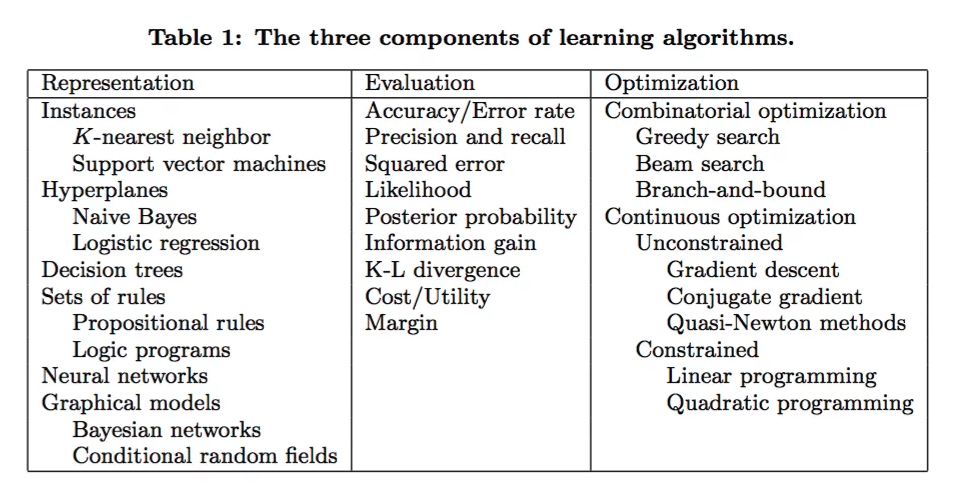
IFrame(src='http://www.r2d3.us/visual-intro-to-machine-learning-part-1/', width=1000, height=800)
How do we get machines to learn?#
Choose the best learning algorithm
Other things that matter
Collect and collate meaningful data
Provide the data to the machine in a form that emphasizes the learning objective
**Humans and machines are great collaborators:
Humans are great at deducing conclusions from a few examples based on abstract connections between observations
Machines are great at searching large high-dimensional information for statistical trends**
Challenges and Limitations#
Overfitting#
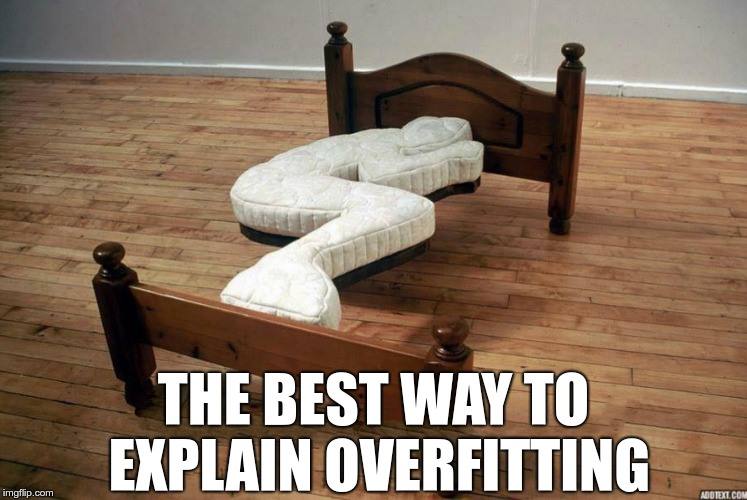
This might be a comfy bed for you, but I don’t know if your friend would like to sleep on it ☺️
It is possible to get perfect accuracy on a test set but cannot conduct inference on a new problem
The model is not generalizable
A model can classify types of apples but show it an orange and it is useless
Overfitting Example with Polynomials#
# Defines the function
def true_fun(X):
return np.cos(1.5 * np.pi * X)
# sets a random seed for consistent plotting
np.random.seed(0)
# sets the number of samples
n_samples = 100
# Sets the range in degrees
degrees = [1, 4, 15]
# adds some noise to the data
X = np.sort(np.random.rand(n_samples))
y = true_fun(X) + np.random.randn(n_samples) * 0.3
# does the plotting
plt.figure(figsize=(14, 5))
# Loops around the number of degrees selected
for i in range(len(degrees)):
# makes the subplot
ax = plt.subplot(1, len(degrees), i + 1)
plt.setp(ax, xticks=(), yticks=())
# creates the polynomial
polynomial_features = PolynomialFeatures(degree=degrees[i],
include_bias=False)
# Least squares linear regression
linear_regression = LinearRegression()
# establishes a fitting pipeline
pipeline = Pipeline([("polynomial_features", polynomial_features),
("linear_regression", linear_regression)])
# does the fit
pipeline.fit(X[:, np.newaxis], y)
# Evaluate the models using crossvalidation
scores = cross_val_score(pipeline, X[:, np.newaxis], y,
scoring="neg_mean_squared_error", cv=10)
# Defines a linear vector
X_test = np.linspace(0, 1, 100)
# plots the real model
plt.plot(X_test, pipeline.predict(X_test[:, np.newaxis]), label="Model")
plt.plot(X_test, true_fun(X_test), label="True function")
# plots the generated data
plt.scatter(X, y, edgecolor='b', s=20, label="Samples")
# sets the axes format
plt.xlabel("x")
plt.ylabel("y")
plt.xlim((0, 1))
plt.ylim((-2, 2))
plt.legend(loc="best")
plt.title("Degree {}\nMSE = {:.2e}(+/- {:.2e})".format(
degrees[i], -scores.mean(), scores.std()))
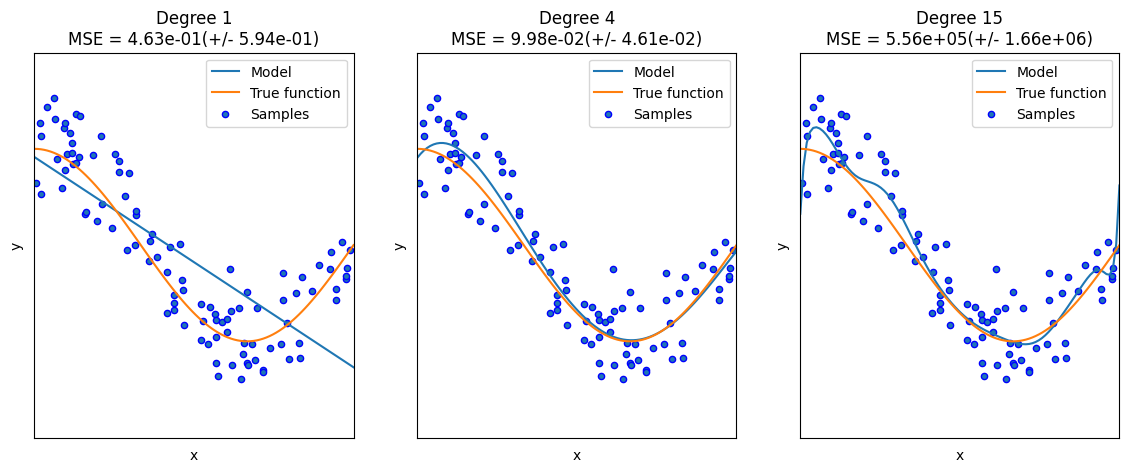
Categories of Machine Learning#
Supervised Learning#
The data that we have comes with examples that have ground truths for what we want to predict
IFrame(src='https://scikit-learn.org/stable/supervised_learning.html#supervised-learning', width=1000, height=1000)
Classification#
Samples belong to two or more classes … we want to learn from labeled data how to predict the class of an unlabeled example.
Example: Read handwritten digits from images
Regression#
The desired output consists of one or more continuous variables.
Example: Predict the yield of product for a given operating condition
Unsupervised Learning#
Training data consists of input values without any target values Goals are to:
Cluster - Cluster data into groups
Dimensionality Reduction - Reduce the dimensionality of data
Generation - Try to generate new samples that belong to the same distribution
IFrame(src='https://scikit-learn.org/stable/unsupervised_learning.html#unsupervised-learning', width=1000, height=1000)
Designing a Training and Validation#
Training and Testing Sets#
When conducting machine learning we want to train the model with one training dataset and then apply it to new never-before-seen testing data
It is quite common to have a validation dataset that you can validate your model independent of your in-training metrics
Example Workflow#
Loading Example Datasets#
scikit-learnhas a handful of datasets for testing purposesIt is always good to benchmark models on standard data sets
# imports iris dataset
iris = datasets.load_iris()
# imports digits dataset
digits = datasets.load_digits()
Each of these datasets are classes that contain:
*.data:n_samples, n_featuressamples and features*.target: ground truth
Visualization#
You must have an idea of what the data from a random sample of your dataset looks like
# selects a random example
ind = np.random.randint(0,100)
plt.imshow(digits.data[ind].reshape(8,8))
plt.title(f'Target is {digits.target[ind]}')
plt.tick_params(left = False, right = False , labelleft = False ,
labelbottom = False, bottom = False)
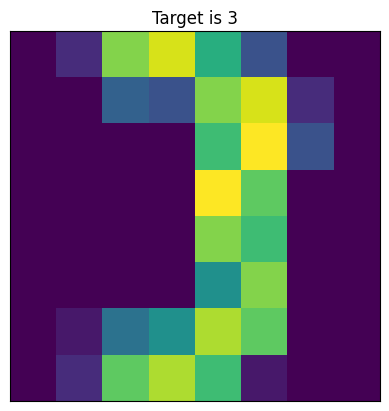
Learning to Fit and Predict#
For now, we can think of the algorithm as a semi-perfect magical black box
# makes an object that is the classifier with specific hyperparameter
# this is the model that you are training
clf = svm.SVC(gamma=0.001, C=100)
Here we choose some good parameters that might have to use gridsearch or cross-validation to determine these
Fitting the data#
# Fit the model using some data
# Includes all data except the last index
clf.fit(digits.data[:-1], digits.target[:-1])
SVC(C=100, gamma=0.001)In a Jupyter environment, please rerun this cell to show the HTML representation or trust the notebook.
On GitHub, the HTML representation is unable to render, please try loading this page with nbviewer.org.
SVC(C=100, gamma=0.001)
Visualizing the Results#
# selects a random example
ind = np.random.randint(0,100)
plt.imshow(digits.data[ind].reshape(8,8))
plt.title(f'Target is {digits.target[ind]}, the prediction is {clf.predict(digits.data[ind].reshape(1,-1))}')
plt.tick_params(left = False, right = False , labelleft = False ,
labelbottom = False, bottom = False)

Saving a model#
Once trained it is possible to save a model to a file using
pickle
Saves the Model#
Saves the model object as a pickle
# saves the model
s = pickle.dumps(clf)
Loads the Saved Model#
# loads the model
clf2 = pickle.loads(s)
Tests the Loaded Model#
# test the model
# selects a random example
ind = np.random.randint(0,100)
plt.imshow(digits.data[ind].reshape(8,8))
plt.title(f'Target is {digits.target[ind]}, the prediction is {clf2.predict(digits.data[ind].reshape(1,-1))}')
plt.tick_params(left = False, right = False , labelleft = False ,
labelbottom = False, bottom = False)
